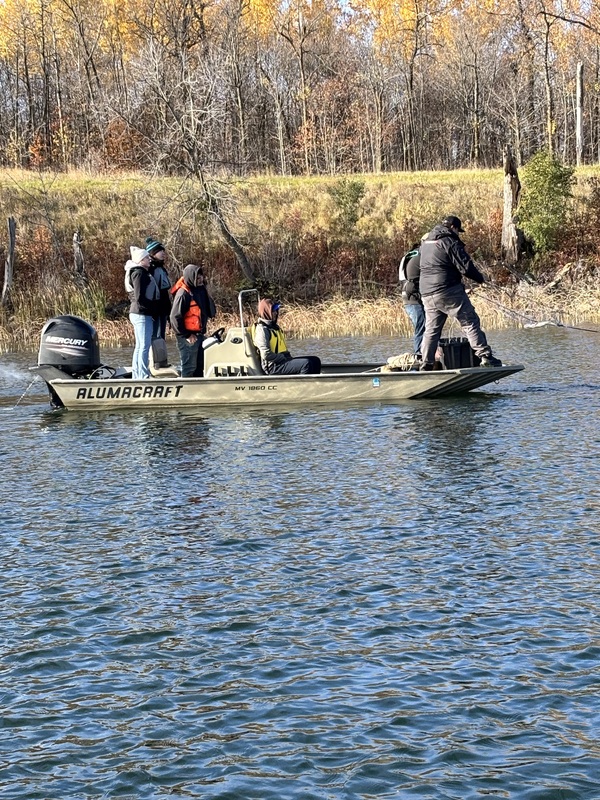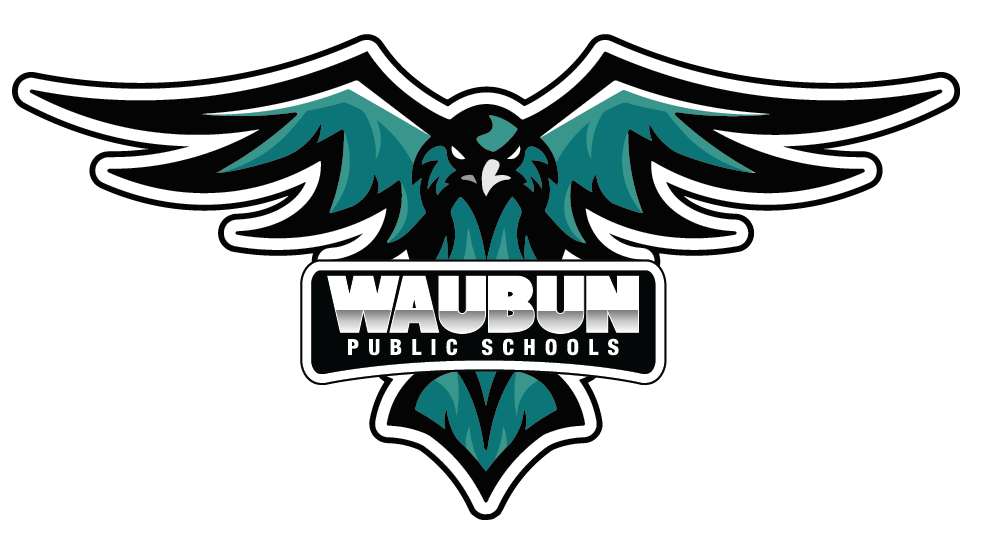On Thursday, October 20th, Waubun students, in conjunction with the Waubun Indian Education Department and the White Earth Department of Natural Resources, got to participate in a netting demonstration and experience. The netting trip was timed with the opening of the whitefish and rough fish netting season. Students were taught how to set nets within the regulation guidelines to target these types of fish and limit incidental catches. Several students were able to get in the boats and set nets within these guidelines. 
The White Earth DNR had set two nets the night before. Students rotated in the boats so that a maximum number of students got to experience pulling the nets. The WE DNR also provided a pontoon with all of the other students on it so they could be next to the boats and observe everything that was going on. It was very beneficial for those on the pontoon to see how things were done, and then see the fish coming in in the net.
Once back on shore, students set up two lines to remove the fish in the net. Two students untangled the net from the tub that it was in, four students then removed any fish in the net, and then two students stacked the net so that it did not tangle. It was very eye opening to the students as to how hard it is to get the fish out of the net.
An incidentally caught small mouth bass was then used as a specimen for a fish dissection for the students. They went through all of the external features to include fins, sensory organs and adaptations for the environments they inhabit. Then the internal structures, positions and structures were gone through. The meat from the bass was then saved to be utilized.
After the dissection, students then formed two lines to gather data and process the fish. Each fish was numbered with a tag to keep all the data straight. The first station took the length and actual weight of the fish. Later in class, the length would be used to calculate the weight utilizing the formulas for weight. These two sets of weights ( Actual and calculated) were then used to determine if there were any trends in size vs weight of the fish found in the lake.
Next the students were taught how to clean the fish. Each student that wanted to was allowed to try and instructed how to clean the different species of fish.
After the fish were cleaned, the students were instructed how to remove the ear bones of the fish. The ear bones are the most reliable way to determine the age of the fish. They develop layers and rings like a tree as the fish grows older. The earbones are used by the fish, not to hear, but to determine body position in the water similar to how our ears provide us balance. The earbones are located behind the brain in a very crystal looking case at the front of the spinal cord. Students were instructed how to remove them without damaging them and then preserve them for study.
The students then took water samples from the lake and performed 12 water quality tests on the lake. The data was then used to help get a larger picture of the health of the lake ecosystem.
Back in class, the students then utilized dissecting scopes to determine the age of the fish. All of the data was processed to give an overall health of the lake ecosystem.
Water Quality Data
Secchi Disk Reading 11 feet 4 inches
Turbidity < 60 NTU
Dissolved Oxygen 13.9 ppm
Ph 8.3
Alkalinity 210 ppm
Hardness 264 ppm
Acidity 14 Mg/L
Nitrates 5ppm
Phosphates 4 ppm
Fish Data
Average Length 48 cm
Average Actual Weight .96 Kg
Average Calculated Weight (Length3/100000) 1.11 Kg
Average Age 3.9 Years
Growth Rates 0.2 Kg/cm and 0.24 Kg/year

